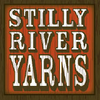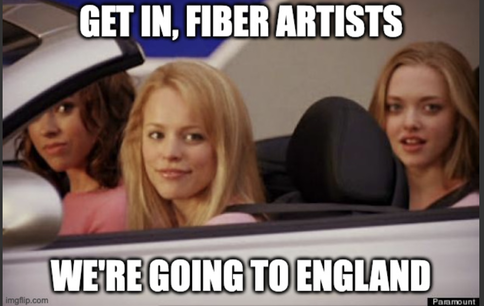|
Worsted-weight yarn - also known as #4 yarn - is tied with fingering-weight yarn for the most popular yarn weight in our shop. It’s where most beginners start, and it’s got a huge range of options available.
But what does “worsted” even mean? What did it ever do to get so harshly judged? Read on and find out! According to the Craft Yarn Council guidelines, a worsted-weight yarn might also be known as “afghan yarn” or “aran-weight yarn.” (While aran-weight is generally in this category, it’s actually not exactly the same as a worsted-weight; it’s slightly thicker, but not enough to qualify as a bulky-weight yarn.) In crochet, you can expect a worsted-weight yarn to get you about 11-14 single crochet stitches in 10 cm / 4”; in knitting, it’ll get you 16-20 stitches in stockinette in 10 cm / 4”. The average hank of worsted-weight yarn runs between approximately 146-210 meters / 160-230 yards in 100 grams / 3.5 ounces. In the shop, we have a lot of options for you in worsted-weight yarn: Berroco Vintage, Malabrigo Ríos, Noro Haunui, and Ella Rae Cozy Alpaca Worsted, just to name a few. So where does the term "worsted" come from, anyway? This one is fairly easy to trace. Back in the Middle Ages, a village near Norfolk became a textile center known for two things: long-fleeced sheep and a fabric woven from the strong, smooth, dense yarn that was spun from those sheeps’ fleece. Various sources agree that this village was known for the quality and output of its textile goods for over 600 years. That village’s name? Worstead. How did it come to apply to a specific yarn weight? That’s a little harder to suss out. It seems to come from the fact that the fiber and yarn produced in Worstead were composed of smooth, denser wool with a longer fiber length. After the wool industry was well-established in Worstead, the type of yarn the village produced became generally known as “Worstead yarn”... and over the years, the spelling changed to “worsted.” But wait, you might ask. If there’s “Worstead / worsted” yarn… that implies that there’s a different term for a different type of yarn, then? And the answer is yes - you’re absolutely correct about that. Without going too deep into the weeds on this, commercial yarn comes in many different forms and structures, but the way it’s spun generally falls into one of two categories: worsted-spun and woolen-spun. Worsted-spun yarns are like Berroco Vintage or Malabrigo Ríos; I refer to them as the brownies of the yarn world. They’re smooth, dense, and pretty easy to find. Woolen-spun yarns are like Harrisville Highland or Brooklyn Tweed Shelter, and I refer to them as the meringues of the yarn world. They’re lightweight, lofty, and somewhat more difficult to find these days. (You can get more information and see the difference between these two types of yarn in an article by Jillian Moreno over at Modern Daily Knitting if you want to learn more.) Taking all that into consideration, then, it seems like the type of yarn originally produced in Worstead gave its name first to a spinning technique and lightweight garment fabric, and that name then got applied over time to describe a specific size of yarn. It’s odd to me that it wasn’t pulled into use for the smaller size of yarn you’d typically use for durably woven clothing fabric, but maybe it just became good enough as a descriptive word, and that was that. Want to read more about all the different uses of the term “worsted”? Read more about it over on HandwovenMagazine.com in an article by Susan E. Hornton. Next week, we’ll wrap up this series of blog posts with a quick look at bulky and jumbo yarns, then take a break for a couple of weeks.
0 Comments
Leave a Reply. |
AuthorLindsey Spoor is the owner of Stilly River Yarns in Stanwood, WA. Archives
April 2024
Categories |
Reach out! |
Come visit us at our brick-and-mortar shop in Stanwood!
NEW LOCATION STARTING JULY 16, 2024:
7104 265th St. NW Suite 120 Stanwood, WA 98292 Shop phone: (360) 631-5801 Email: [email protected] Text: (515) 833-0689 |
|
|
Proudly powered by Weebly
Stilly River Yarns LLC
Copyright © 2024
Copyright © 2024


 RSS Feed
RSS Feed